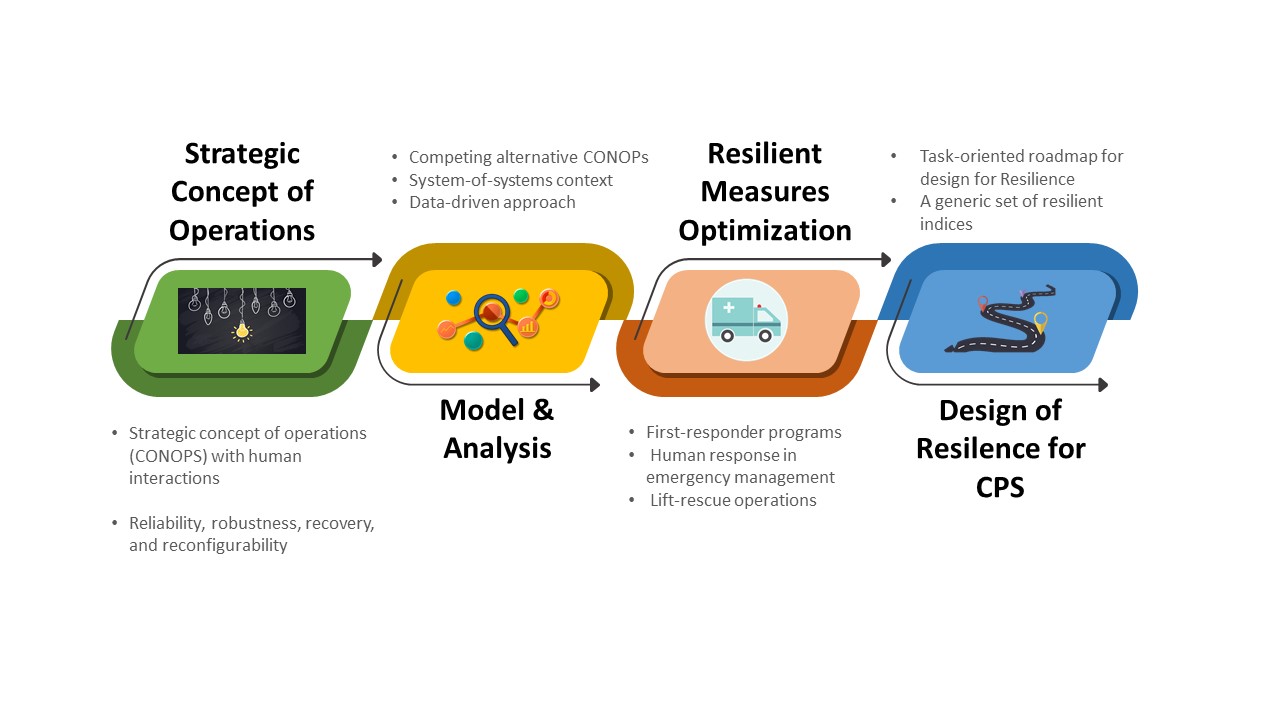Design of Cyber-Physical Systems
The “Design of Cyber-Physical Systems” Module includes two key tasks:
- Development and evaluation of strategic concept of operations (CONOPS) for cyber-physical systems (CPS) with consideration of human interactions with the aim of optimising system level resilience;
- Development of resilience indices as performance measures so as to optimise the four dimensions of resilience; namely, reliability, robustness, recovery and reconfigurability; through better design of CPS.
The former will entail development of competing alternative CONOPs and subsequent in-depth modelling and analysis of the related systems. This will involve data-driven approach on actual systems. For the latter, the focus will be on the design for two important dimensions of system resilience, recovery and reconfigurability, which are less understood and investigated in the current literature. This will involve system-of-systems consideration and approach. It is envisaged that a systematic roadmap for developing resilience-driven design will be established and validated. At this stage a four-phase roadmap, namely, detection, identification, quantification, and design; has been proposed and is under validation for emergency response system.
The research objectives of the “Design of Cyber-Physical Systems” Module are:
- Optimisation of first-responder programme (as a CPS) with new CONOPs.
- Understanding the effect of human response in cyber-enabled emergency response management.
- System design of lift-rescue operations as a spatially and temporally distributed CPS.
- Optimisation of resilience through analysis and improvement of respective resilient measures.

Expected outcomes
The expected outcomes of this module include:
- A task-oriented roadmap for Design for Resilience
- A generic set of resilient indices
- Optimal CONOPs of emergency response systems with human interactions
- Optimal planning and deployment of spatial and temporal CPS
- Joint project with AccelNet to be funded by NSF of USA
